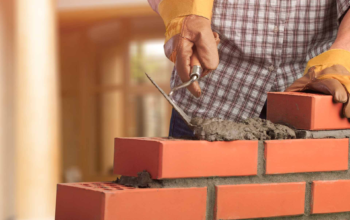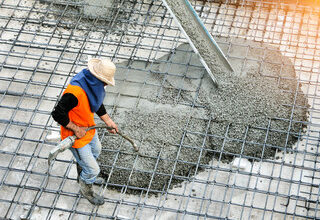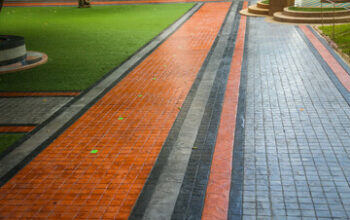Masonry Repair Long Island is a regular part of brick construction that helps prevent further damage and maintain the structural integrity of the building. It involves things like repointing, filling in cracks and applying a penetrating water repellent sealant to resist moisture penetration.
This is different from restoration, which is more involved and focuses on restoring the historic appearance of the structure. Ignoring masonry problems can lead to costly repairs in the future, so it is important to address them quickly.

Although brick and stone are strong and durable, they aren’t impervious to wear and tear. Keeping an eye out for these signs of masonry repair can ensure your home’s structural integrity and prevent expensive repairs later on.
One of the most common signs that a structure is in need of masonry work is damage or decay to the brick and mortar itself. Stains on brick, erosion, cracking, and water leaks are all indicative of masonry problems. When these issues are caught early, they tend to be less labor-intensive, time-consuming, and costly to fix than if left unchecked.
Masonry repairs can range from sandblasting and tuckpointing to restoring or repairing structures such as chimneys, patios, walls, and more. Some of these projects require a professional to complete, while homeowners with the right tools and knowledge may complete others. Masonry restoration differs from repair in that the goal is not to simply repair damaged structures, but to restore them to a particular style or appearance. For example, if a building was originally built with Victorian brick, the mason would use specific materials such as type O mortar to match the original look of the brick.
The most important sign to watch for when deciding on masonry repair is the integrity of the brick itself. Cracks, stains, and erosion are all indications that it’s time to call in the professionals. If a brick is in disrepair, it can collapse or be significantly more expensive to replace than if it was cared for properly.
A damaged or weakened chimney is another sign that you should consider masonry repair services. Chimney problems can lead to carbon monoxide poisoning and chimney fires. The most common chimney problems include cracked or missing mortar, crumbling bricks, and structural issues such as a leaning or tilting chimney.
In addition to chimney issues, other common masonry repair services include the installation and repair of a chimney cap to keep out debris and animals. Other masonry repairs can include chimney sweeping, waterproofing, and crown and flashing repair. Waterproofing is designed to protect recent masonry repairs from further damage and preserve a structure’s longevity.
If you’ve ever owned or worked on a brick structure, chances are good that you have dealt with efflorescence, the chalky, white residue that sometimes appears on masonry walls. While it’s unsightly, it is not harmful and can usually be quickly corrected with some simple cleaning techniques.
Efflorescence, which also goes by the name “whiskers,” is actually a crystalline deposit of water-soluble salts that form on or in building materials such as brick, concrete, paving stones and stucco. It is a common problem in buildings and is typically found near water fountains, stairs, leaking pipes, and other areas that are vulnerable to excess moisture. Efflorescence can have a gray, white or yellow tint and usually has a powdery appearance.
While it isn’t harmful, efflorescence should always be addressed as soon as it is noticed. In addition to its aesthetic effects, it can indicate underlying moisture problems that could lead to structural damage. Using an impregnating hydrophobic sealant to prevent water absorption and implementing capillary breaks are effective methods of preventing efflorescence.
Several factors can cause efflorescence, including cement or other additives that contain soluble salts, as well as building materials such as lime or clay which may be exposed to moisture. In many cases, the source of the moisture is the result of a leak or groundwater infiltration. Whether the building is new or old, it should be evaluated to determine the cause of the leakage and repairs made to protect the structure.
Jake Boyer, business unit leader of PROSOCO’s Clean and Protect division, explains that for efflorescence to form, three things must be present: Soluble salts, something to solubilize them and a path for them to migrate from the inside out. “Stop any one of those three, and you will eliminate efflorescence,” he says.
When cleaning a wall to remove efflorescence, it’s important to use a cleaning solution designed specifically for the substrate and a lower pressure than normal to avoid driving any contaminants deeper into the pores. It’s also a good idea to apply a breathable, penetrating protective treatment after the wall is clean to keep bulk water out while still allowing vapor to escape. Avoid using harsh acids such as muriatic acid, which can cause unwanted damage and etching.
Tuckpointing is a process that involves repairing the mortar joints in brick or stone masonry structures. These joints are a crucial part of the overall structure, helping to keep the brick or stone together and preventing water from seeping into the walls and causing damage. If the mortar joints deteriorate, it can cause cracks or even break apart the bricks. A mason or construction expert will often inspect a building for signs of mortar wear and tear and perform tuckpointing as needed.
Tuckpointing can be done in small sections of a building or can be performed across the entire structure. During this process, the mason will grind away the old mortar and fill in the joint with new mortar that matches the original color of the bricks. It can be a time-consuming process that requires careful attention to detail. It is also a job best left to the pros, who can ensure that the mortar is properly repaired to prevent moisture issues in the future.
Masonry structures are a beautiful addition to any home or commercial space. Unfortunately, the mortar that holds bricks and stones together can be damaged over time by moisture, environmental elements, and age. This can cause the bricks to break down, leading to structural problems that will require costly repairs. Fortunately, a masonry professional can prevent this by performing tuckpointing as needed.
When the mortar on a masonry structure begins to wear away, it is important to call a mason right away. This will prevent the problem from worsening, which can lead to more serious cracking and crumbling of the bricks themselves. Tuckpointing is a relatively inexpensive maintenance process that will protect the integrity of your brick structure and help it look like new for years to come.
If you think your brick or stone structure may need tuckpointing, contact us today to request an inspection. Our experienced team of professionals will be happy to provide a quote and discuss our array of tuckpointing services.
Masonry is a strong and durable material, but like all building construction materials, it requires regular maintenance and repairs. If masonry damage goes untreated, it can weaken the structure and threaten its safety. Taking the time to repair masonry damage and identifying signs of damage in the first place can save money in the long run by preventing more serious problems down the line. It’s also important to understand the difference between masonry repair and restoration so you can choose which is best for your building needs.
If you’re looking for a commercial masonry contractor, look for one who takes a holistic approach to masonry repair and restoration. Ideally, the contractor you hire will take the time to learn about your building and its history. This will help them develop a repair plan that’s best suited to your needs. Masonry repair typically involves repairing cracks and replacing damaged bricks, mortar joints, and repointing. It may also include a variety of other methods, such as installation of movement joints to accommodate structural movements and shrinkage; applying a waterproof coating; or installing steel reinforcement.
Small cracks in a brick wall are not necessarily cause for alarm, but it’s always wise to have them repaired as soon as possible. This can prevent the cracks from spreading and widening, and it will also make your building more energy efficient, reducing heating and cooling costs.
Large cracks in a masonry wall need to be addressed immediately. They’re often a sign of a structural problem and should be investigated by a professional to determine the cause and extent of the cracking. This may involve a detailed inspection, including measuring crack widths using a crack comparator card and/or an optical crack width measurer, to determine the type of repair necessary.
A reputable masonry contractor will ensure that all cracks are fixed properly and that the underlying cause of the cracking is resolved. This can involve foundation stabilization to address ground movement; design and construction of new movement joints to accommodate masonry expansion and contraction; and grout injection to restore the original structural capacity of the cracks.



